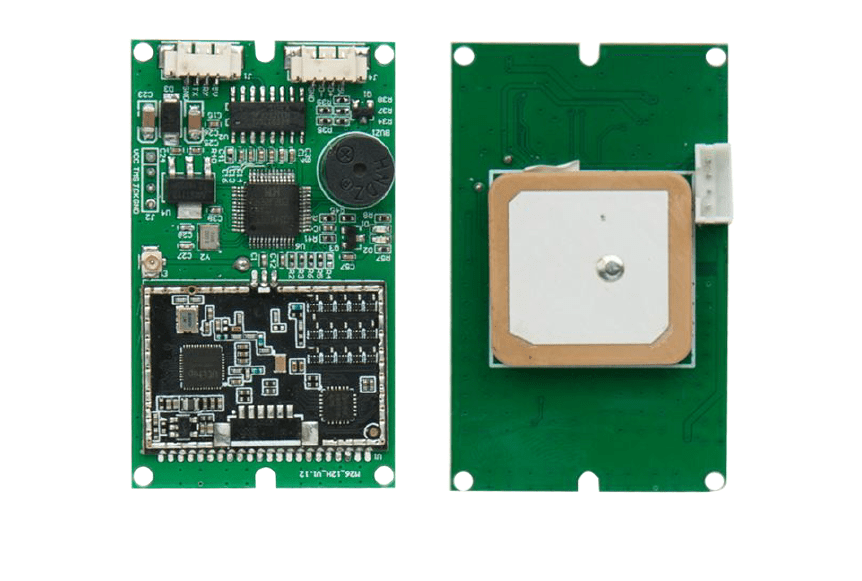
5pcs M26 Quality RFID UHF Reader Modules
Description:
The M26 RFID UHF reader modules is a integraded GB 920~GB925 Mhz, FCC 902~928MHZ frequency.The RFID card reading module comes with CPU control without secondary programming, and the communication interface adopts 232 level serial port or TTL level serial port or USB, power supply can be 5V DC voltage or USB power supply.
Features:
◆ easy to install, widely used and easy to develop.
◆ provides a secondary development package, including test software, instructions for use, and application routines.
◆ It can be seamlessly connected with any system, no need to install additional drivers, only need to connect VCC,TX, RX, GND four wires can be communicated.
◆ 5V DC power supply, computer USB power supply, can meet the requirements of most control boards Beg.
◆ Humanized design, with controllable buzzer, on-board power LED light/card reading LED indicator,It is convenient to check the power-on status and card reading response status.
◆ Complete functions, simple development, support reading ultra-high frequency (UHF) radio frequency card card number or sector information.
◆ It has broad application prospects in various industries such as logistics, retail, and identity recognition.
parameters:
Support Protocols :EPC global UHF class 1Gen 2, ISO 18000-6C and GB/T29768-2013
Supports card: ultra-high frequency (UHF) radio frequency cards
Operating system: Windows98, XP, Win7, 8, 2003, LIUNX, UNIX, Android
The reading distance is 0~20cm
The card reading time < 300ms
The communication rate is 115200bps
The RF antenna is welded with an ultra-high frequency antenna and an external antenna interface
Communication interface: Uart TTL, RS232, USB
The working voltage is supplied with 5V
The working current is 80mA~200mA
Working frequency: GB 920~GB925MHZ, FCC 902~928MH
Working environment temperature(-40°C~70°C) Humidity(10%~95%)
Indicator LED
Built-in horn buzzer
Net weight/gross weight 22.6g
Product size: motherboard: 58mm×34mm

5pcs M26 Quality RFID UHF Reader Modules
If you have any questions, you are always welcome to contact us. We'll get back to you as soon as possible, within 24 hours on weekdays.
-
Shipping Information
Use this text to answer questions in as much detail as possible for your customers.
-
Customer Support
Use this text to answer questions in as much detail as possible for your customers.
-
FAQ’s
Use this text to answer questions in as much detail as possible for your customers.
-
Contact Us
Use this text to answer questions in as much detail as possible for your customers.
FAQs
Please read our FAQs page to find out more.
What transportation method do you use?
All our products are shipped via international express services, such as DHL and FedEx,? completely free of charge
What is DLP 3D printing, and how does it work?
DLP 3D printing is a resin-based additive manufacturing technology that uses light to cure liquid photopolymer layer by layer. It involves projecting digital images onto a vat of liquid resin, where the exposed resin hardens to form each layer of the 3D object.
How does DLP 3D printing differ from other 3D printing technologies?
DLP 3D printing differs from other technologies such as FDM (Fused Deposition Modeling) in its use of light to cure resin, which allows for faster and more precise printing. It also typically offers higher resolution and smoother surface finishes.
Why are UV projectors critical in DLP 3D printing?
UV projectors are critical in DLP 3D printing because they emit the ultraviolet light that cures the resin. The quality, speed, and reliability of the printing process depend heavily on the performance of the UV projector.
What factors should be considered when selecting a UV projector for DLP 3D printing?
When selecting a UV projector, factors to consider include wavelength, resolution, LED lifespan, controller compatibility, and mechanical integration. The ideal projector should match the specific needs and requirements of the DLP 3D printing system.
What are the system requirements for DLP 3D printing?
System requirements for DLP 3D printing include a compatible UV projector, resin vat, build platform, and control system. Specific hardware specifications, such as resolution and interface compatibility, should also be considered.
How do I connect and configure a DLP 3D printing system?
Connecting and configuring a DLP 3D printing system typically involves connecting the UV projector to a PC via USB, launching the manufacturer's proprietary configuration software, and setting up the printer parameters, such as layer thickness and exposure time.
What is "pixelation" in DLP 3D printed models, and how can it be addressed?
Pixelation" refers to the appearance of tiny square or grid-like patterns on the surface of DLP 3D printed models. It can be addressed by increasing the resolution of the UV projector, adjusting the light curing parameters, or optimizing the print path.
What role do TIR prisms play in DLP 3D printing, and why are they important?
TIR (Total Internal Reflection) prisms play a critical role in DLP 3D printing by precisely redirecting light from the micro-mirror arrays to the projection optics. They maintain polarization and ensure that the light is evenly distributed across the resin vat, which is essential for high-quality printing.
What languages and currencies are supported on
The website supports multiple languages, including English, Simplified Chinese, Arabic, Korean, German, and Japanese. It also offers a variety of currency options, such as USD, EUR, AUD, and more, to cater to international visitors.
How can I stay updated with new collections and exclusive offers
To stay updated with new collections and exclusive offers, you can subscribe to the website's newsletter by providing your email address. This will allow you to receive notifications about the latest products, promotions, and news directly to your inbox.
